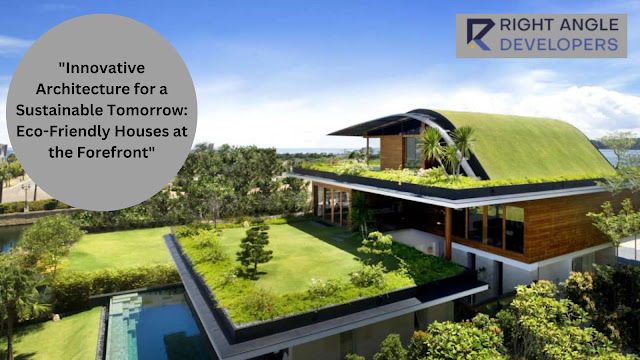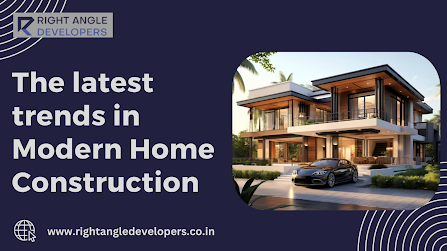"Innovative Architecture for a Sustainable Tomorrow: Eco-Friendly Houses at the Forefront"
Introduction:
In today's world, the importance of sustainable living has become increasingly evident. As we strive to minimize our carbon footprint and protect the environment, eco-friendly houses are gaining popularity. These innovative architectural designs incorporate sustainable practices and materials to create homes that are not only aesthetically pleasing but also environmentally responsible.
In this blog post, we will explore the concept of eco-friendly houses and showcase some remarkable examples of innovative architecture that are at the forefront of sustainable living.
1. Understanding Eco-Friendly Houses:
Eco-friendly houses, also known as green or sustainable houses, are designed to have a minimal impact on the environment throughout their lifecycle. They prioritize energy efficiency, resource conservation, and use of renewable materials. These houses aim to create a harmonious relationship between the occupants and the natural surroundings, promoting a healthier and more sustainable way of living.
2. Energy-Efficient Design:
One of the key features of eco-friendly houses is their energy-efficient design. They incorporate various elements such as passive solar design, proper insulation, and advanced HVAC systems to reduce energy consumption. Smart technologies are often integrated to monitor and optimize energy usage, further minimizing environmental impact.
3. Renewable Energy Integration:
To further enhance their sustainability, eco-friendly houses often integrate renewable energy sources. Solar panels, wind turbines, and geothermal systems are common additions that generate clean energy on-site, reducing dependence on fossil fuels and lowering carbon emissions.
4. Efficient Water Management:
Water conservation is another crucial aspect of eco-friendly houses. Features like rainwater harvesting systems, greywater recycling, and low-flow fixtures help minimize water consumption. Landscaping designs that prioritize native, drought-resistant plants reduce the need for excessive irrigation.
5. Use of Sustainable Materials:
Eco-friendly houses prioritize the use of sustainable building materials. These include recycled or reclaimed materials, responsibly sourced wood, and non-toxic, low VOC (volatile organic compounds) products. By using these materials, the construction process minimizes environmental impact and promotes a healthier indoor environment.
6. Natural Ventilation and Lighting:
To reduce reliance on artificial systems, eco-friendly
houses maximize natural ventilation and lighting. Strategic placement of
windows, skylights, and ventilation systems allows for optimal airflow and
natural light, reducing the need for excessive energy consumption.
Eco-friendly houses are designed to seamlessly blend with the natural surroundings. They often incorporate landscaping strategies that promote biodiversity, such as green roofs, vertical gardens, and permeable surfaces. This integration not only enhances the aesthetic appeal but also supports local ecosystems.
8. Innovative Architectural Examples:
There are numerous innovative examples of eco-friendly houses that showcase sustainable design principles. From Earthships built with recycled materials to passive houses that achieve exceptional energy efficiency, these architectural marvels push the boundaries of sustainable living.
9. Benefits of Eco-Friendly Houses:
Eco-friendly houses offer a wide range of benefits. They reduce energy consumption and lower utility bills, promote a healthier indoor environment, minimize waste generation, and contribute to a more sustainable future. Additionally, they can increase property value and appeal to environmentally-conscious buyers.
10. Embracing Eco-Friendly Living:
Eco-friendly houses represent a significant step towards sustainable living. They combine innovative architectural design, energy efficiency, renewable energy integration, and responsible material choices to create homes that are environmentally responsible and aesthetically pleasing. By embracing the principles of eco-friendly design, we can create a more sustainable tomorrow for ourselves and future generations.
Conclusion:
If you want to know more information about Eco-friendly houses, please contact us
Call us: +91-8088900660
Email- ID: info@rightangledevlopers.co.in
Website: www.rightangledevelopers.co.in




Comments
Post a Comment